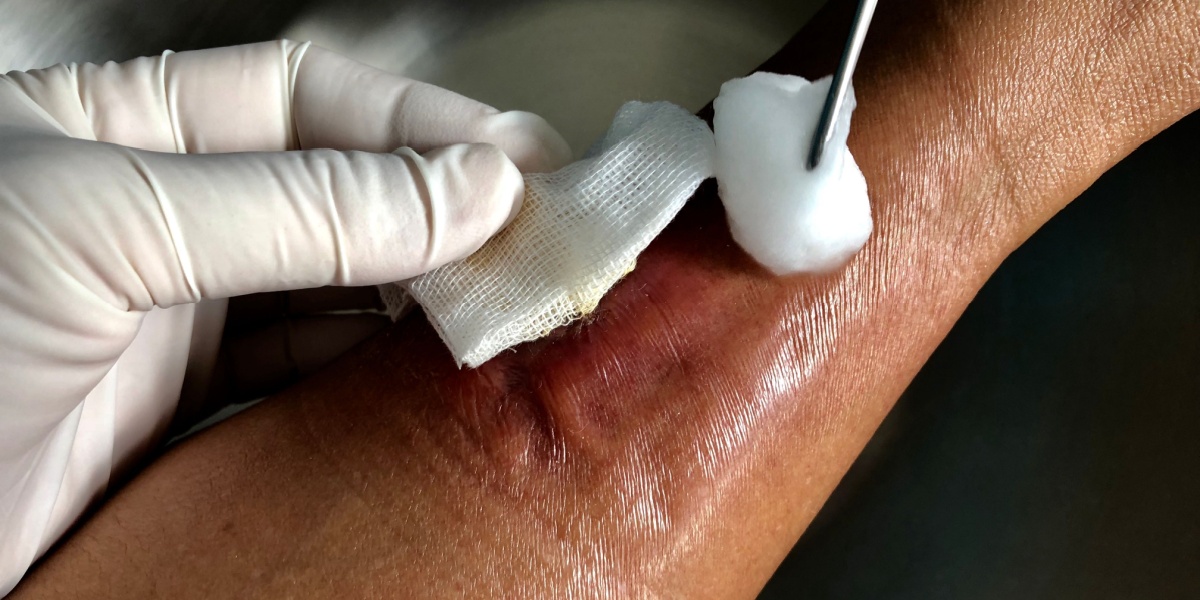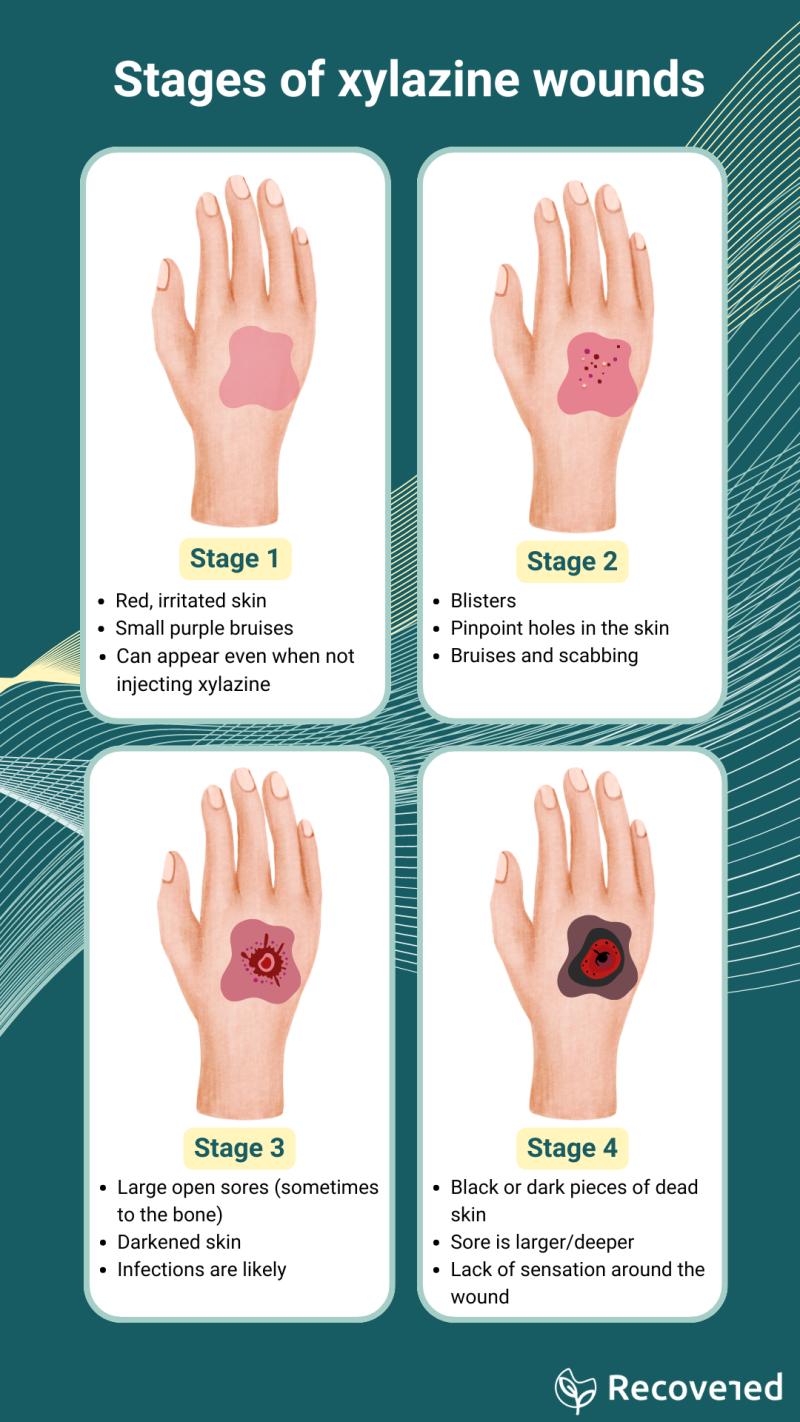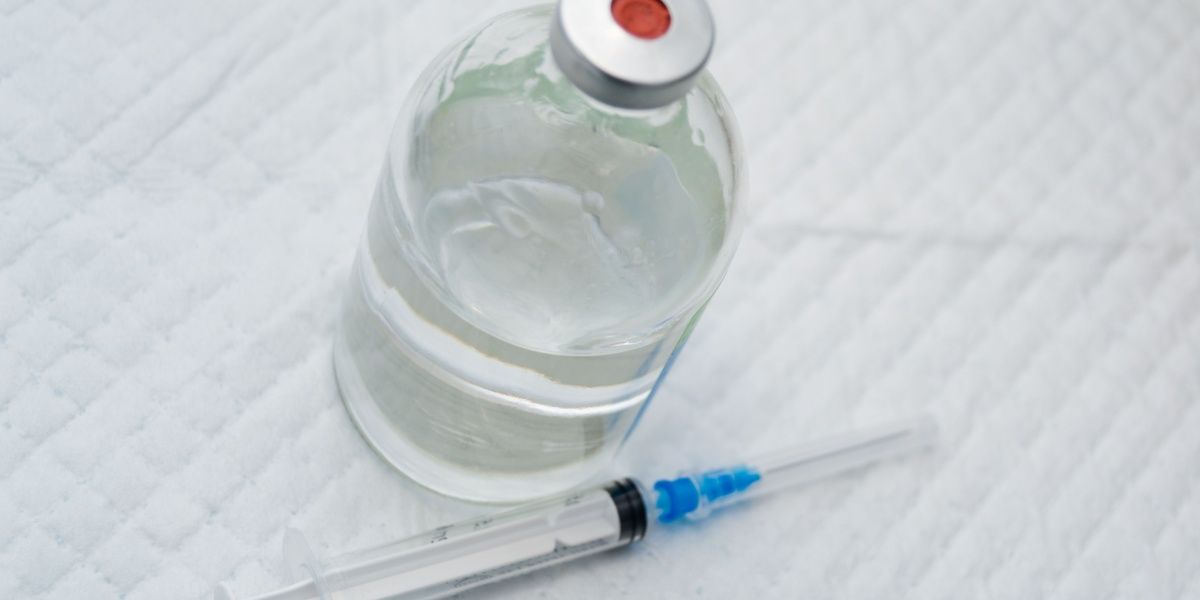The animal tranquilizer xylazine is a medication only approved for use in veterinary medicine. Commonly referred to as tranq and tranq dope, it is increasingly being found in the unregulated drug supply being used by humans, most often found mixed with opioids such as in the presence of fentanyl.
The sedative and euphoric effect xylazine causes enhances that of other drugs such as opioids and is cheap to produce, meaning it has a high potential for abuse. This has led to a xylazine crisis being declared by some in the United States.
Exposure to xylazine can lead to severe effects, including respiratory depression, severe low blood pressure, extremely slow heart rate, and increased risk of overdose death when combined with other substances. Repeated use of xylazine reduces blood flow to the skin, leading to severe tissue damage, pressure ulcers, and necrosis or necrotic tissue, often referred to as "skin rot".
- Xylazine use can lead to wounds in the skin caused by its constricting effects on blood vessels, preventing adequate flow.
- Treating xylazine wounds at home involves keeping the wounds clean, dressed, and moist.
- Professional treatment for xylazine wounds may include treating infection, removing dead skin, and in severe cases, skin grafts or amputations.

How xylazine abuse affects the skin
Xylazine, a veterinary tranquilizer is often mixed with street drugs, particularly opioids such as fentanyl and heroin. People using these substances can develop an opioid use disorder and xylazine dependence, contributing to increased and continued substance use. Some people may be unaware that they are taking xylazine, while others may seek drugs combined with xylazine.[1]
Xylazine causes sedating effects, impacting breathing, heart rate, and blood pressure. It is often injected but can also be ingested orally or inhaled nasally.
Xylazine injection has been found to cause wounds on the skin that can become worse with continued xylazine use and inadequate treatment, potentially resulting in infection and severe consequences. These wounds can occur whether xylazine is injected or taken in other ways and may appear on parts of the body away from injection sites.[2]
How are xylazine-associated wounds different from other drug wounds?
Unlike drugs that cause skin damage caused by repetitive scratching, such as methamphetamine, xylazine wounds believed to be caused by vasoconstriction of peripheral blood vessels, meaning that the drug causes blood vessels near the skin to narrow, slowing or blocking blood flow (or skin perfusion).
Because of this, skin health is reduced and wounds in the skin cannot heal properly, making it more susceptible to ulceration. A study conducted in Puerto Rico reported that people who used xylazine had a considerably higher prevalence of skin ulcers vs those who used other substances (38.5% vs 6.8%).[3]In severe cases, parts of the skin begin to die, known as necrosis.[3][4]
Proper wound treatment can help reduce and stop wound progression and help foster adequate healing. Without treatment, and particularly if xylazine use is continued, wounds can get increasingly worse, growing in size, becoming infected and necrotic, and may require surgical reconstruction and can be life-threatening.[5]
What do xylazine-related wounds look like?
Xylazine wounds tend to look like blisters or burns on the skin. The appearance of the wound can change if it progresses and worsens. Typically, xylazine-associated wounds will emerge as several small lesions in the skin, like pinpoint holes. If these are not treated, they can become larger and may join together to become one large open wound.[2][5]
As the wound worsens, it can present as:[2][5][6]
- Scabs
- Bruises
- Burns
- Pressure ulcers
- Large open sores
- Blisters
- Pieces of dead skin
- Blackening skin
- Peeling skin
- Redness around the wound
- Pus or discharge from the wound
- Increased size
Stages of xylazine wound development

| Stage 1 (Early signs) | Stage 2 (Medical care needed) | Stage 3 (Severe wounds) |
|---|---|---|
| Pinpoint holes in the skin | Open wound, growing in size (soft tissue wound) | Larger open wound |
| Some soreness in upper extremities | Scabbing (possible bacterial infections) | Very red and sore |
| Superficial irritation | Redness (soft tissue infection) | Blackened dead pieces of skin (necrotic tissue) |
Treating xylazine wounds
When a xylazine wound emerges, it may be possible to manage at home without professional treatment. However, if the wound worsens and progresses to stage two or three, professional treatment is required, to prevent severe effects.
Signs that professional treatment or surgical intervention is required include:[6][7]
- Wounds that are growing in size
- Signs of infection, such as fever, redness, smell from the wound, pus or discharge, severe swelling
- Numbness or tingling around the wound
- Impaired movement of the limbs
- Skin falling off or blackening (autolytic debridement)
- Visible muscle or bone (deep tissue necrosis)
Medical guidelines for treating xylazine-induced wounds
There are currently no specific guidelines or harm reduction programs for managing xylazine wounds, although general wound management is reported to be effective and appropriate. Treatment of patients with xylazine-induced acute skin necrosis can include:[4][5][7]
- Cleaning and dressing the wound
- Prescribing antibiotics to treat wound infection
- Removing dead or infected skin (surgical debridement)
- Skin grafting or flap cover to repair large open wounds
- Amputation in very severe cases, such as extreme necrosis or nerve damage
Xylazine wound care management at home
Initial xylazine-associated wound management at home can help prevent infection and reduce negative health consequences. Effective management can include: [5][6]
- Ensuring hands are clean before touching to avoid wound infections
- Cleaning the wound daily with soap and water or saline solution
- Not using alcohol-based products to clean the wound as this can dry it out
- Patting the wound dry after cleaning
- Using ointments, antiseptic cream, or petroleum jelly to keep the wound moist
- Covering the wound with a bandage or plaster, ensuring this is secure but not too tight
- Covering the bandage with a wrap or clothing to keep it dry and protected
- Changing the bandage every 1-3 days as needed
- Using a xylazine test strip before using illicit drugs (available from drug checking services and some websites)
You may wish to draw around each wound with a permanent marker, to help you track any changes in size.
Where to find treatment for xylazine addiction
Reducing and stopping xylazine use, particularly by injection, can significantly improve the healing and recovery of wounds. Safer injection practices, using xylazine test strips to detect the presence of xylazine, and other harm reduction strategies can all help manage health risks and reduce xylazine exposure. People experiencing xylazine addiction may wish to utilize substance use treatments such as:
- Inpatient rehab or outpatient treatment centers provide services for people struggling with the management of xylazine addiction. This includes care from professionals with clinical experience in administering addiction medicine to manage detox, withdrawal, and recovery, as well as behavioral therapy and long-term recovery planning.
- Support groups to access support, advice, and a space to communicate openly with others in similar situations
- Therapy to help manage cravings and withdrawal, treat underlying mental health issues contributing to substance use, and learn coping strategies
- Medications to help manage withdrawal, including psychological and physical symptoms


-(1)-guide-detail.jpg?v=1722504234)

